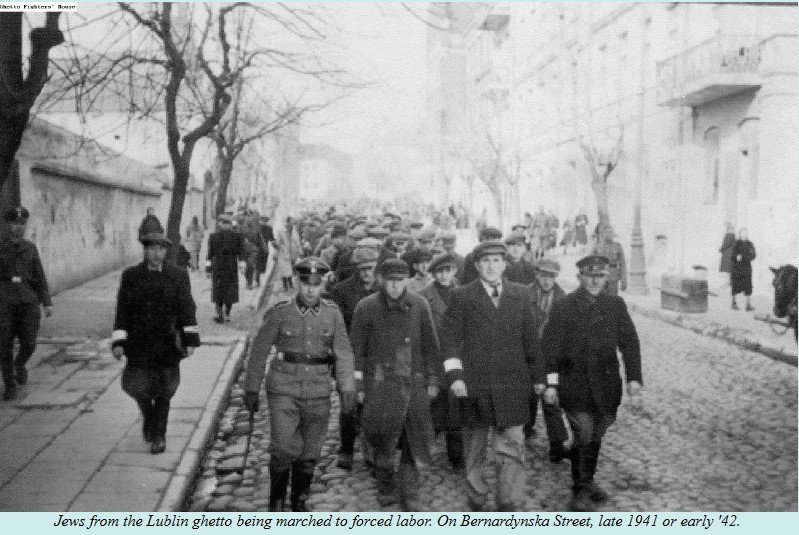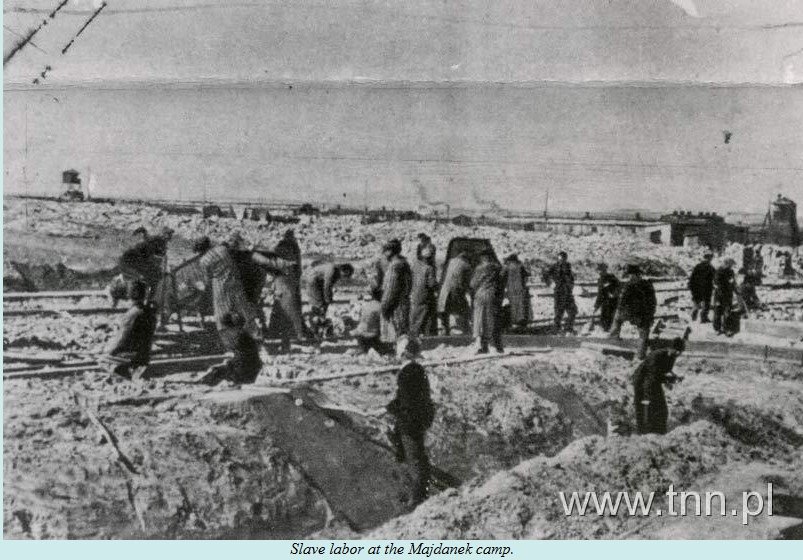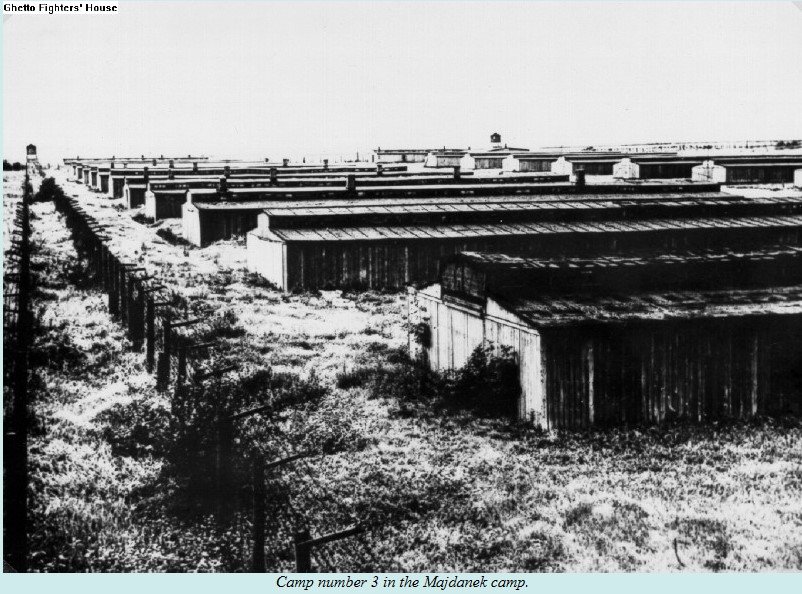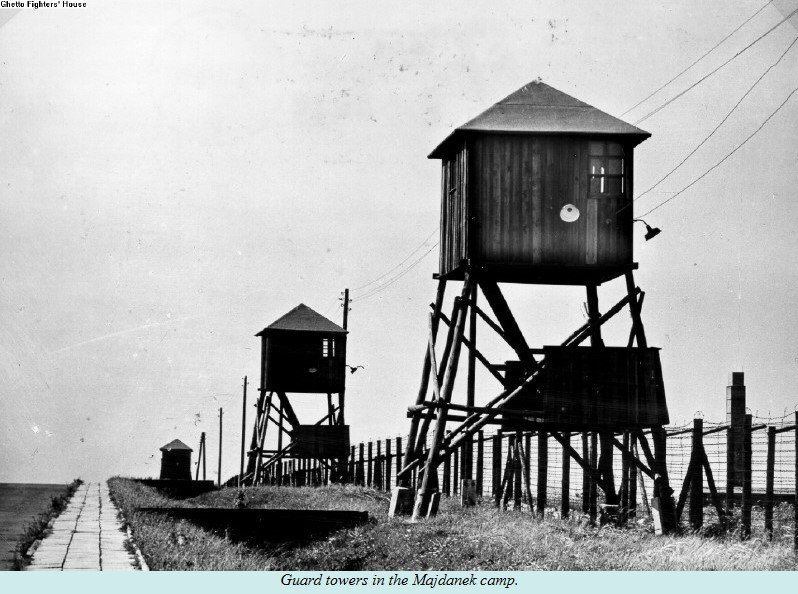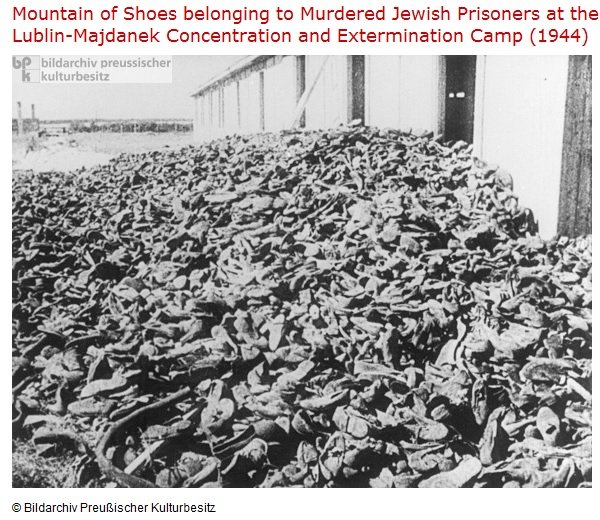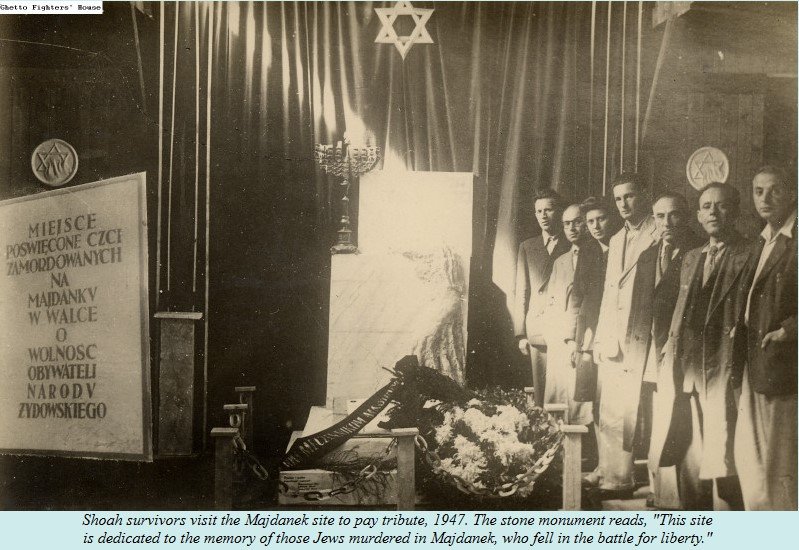The Majdanek Remembrance Project
The Majdanek Concentration Camp (pronounced Mide-on-eck), or KL Lublin, operated from October 1, 1941 until July 22, 1944. It is the best preserved of all of the Nazi concentration camps. Majdanek also consisted of the following sub-camps:
- Alter Flugplatz Lublin Airfield Labor Camp
- Ogrodkowa Street/Sportzplatz Camp
- Belzyce Labor Camp
- Budzyn Labor Camp
- Deblin-Irena Labor Camp
- Dorohucza Labor Camp
- Lipowa 7 Labor Camp in Lublin
- Milejow Labor Camp
- Naleczow Labor Camp
- Poniatowa Concentration Camp
- Trawniki Concentration Camp
In July, 1941 Nazi Heinrich Himmler inspected the area around Lublin to find a camp suitable for 50,000 prisoners. According to Jewish POWs Zalman Rozanitzky and Samuel Gruber -- who had been imprisoned for army service for Poland against the German attack in 1939 -- "From July 1941 and onward, we built Majdanek. Ninety percent of the camp inmates took ill with typhus. The sick people were transferred to the hospital in Lublin that was set up in one of the synagogues. A selection took place and the weak people were sent to the Majdanek Camp, which had been built by us." The Lipowa 7 camp near Majdanek housed Jewish prisoners of war. From October 1942, Majdanek had three permanent gas chambers, in which prisoners were murdered by Zyklon B or carbon monoxide. A list of the Majdanek Nazis is available here. Camp leadership are profiled here.
Names of the victims (incomplete) are online, as are photos from the camp today.
The following are some of the known transports to Majdanek concentration camp:
-- 150 Jewish men, used to build the camp, who had been captured in Lublin or Lipowa in October, 1941;
-- 2,000 to 5,000 Red Army POWs in December, 1941;
-- Unknown number of Jews from Biala Podlaska (including Jewish POWs) in 1941 or 1942;
-- Unknown number of Jews from Pulawy in 1941 or 1942;
-- ~1,000 Jewish men from Slovakia on March 29, 1942;
-- ~15,000 Jews from Slovakia, Bohemia, and Moravia in March and April, 1942;
-- 300 young Jewish women and 100 Jewish men from Uchanie ghetto in May 1942;
-- 700 Jews from Krasnystaw in May, 1942;
-- Unknown number of Jews from Poland in May, 1942;
-- 80 Jews from Deblin and Ryki in May, 1942;
-- Unknown number of Jews from Lida (Belarus) Ghetto in summer, 1942;
-- 400 Jews, including the Judenrat of Biala Podlaska and Jews from Suwalki, in August, 1942;
-- ~500 Jews from Lubartow (incl. Kamionka & Firlej) and Ostrow Lubelski ghettos on Oct. 11, 1942;
-- Unknown number of Jewish women from Radom on January 8, 1943
-- Unknown number of non-Jewish Polish prisoners from Pawiak prison on January 18, 1943;
-- Unknown number of Jewish women from Lwow and Warsaw in January and February, 1943;
-- 1,003 Jews from Drancy Concentration Camp (France) on March 4, 1943;
-- 998 Jews from Drancy Concentration Camp (France) on March 6, 1943;
-- Unknown number of non-Jewish women and children from Belarus in spring, 1943;
-- 500 Jewish men and women from Rejowiec ghetto (including from Slovakia/other countries) in spring, 1943;
-- 1,000 Jews from Miedzyrzec ghetto on April 30, 1943;
-- 1,000 Jews from Miedzyrzec ghetto on May 26, 1943;
-- Unknown number of former Red Army POWs in May, 1943;
-- 1,000 Jewish workers, most of them from Zamosc, in May, 1943;
-- More than 1,000 Jews from Kurow, Lubartow, Piaski ghetto, and Lublin region in May, 1943;
-- 36,500 Jews from rural Poland in 1943;
-- 6,000 Jews from the Netherlands and an unknown number of Jews from Greece in 1943;
-- 74,000 Jews from the Warsaw, Bialystok, and Lublin areas in July and August, 1943;
-- Unknown number of political prisoners from the prison at the Lublin Castle;
-- ~5,000 sick prisoners from Buchenwald, Dachau, and Sachenhausen concentration camps in fall and winter, 1943;
-- Unknown number of female prisoners from Auschwitz and Ravensbruck concentration camps in 1943;
-- Unknown number of Jewish children and residents from Kaunas, Lithuania on March 27, 1944.
Even with the unknown and incomplete figures above, more than 141,000 souls are counted among those transported to the camp. That number is actually much higher, but enough records do not exist to substantiate specific transports to Lublin-Majdanek.
Between November 2nd and 30th in 1942, 21 prisoners attempted to escape from the Majdanek camp but were all shot. According to the Majdanek museum in Poland, around 500 prisoners were able to escape from Majdanek, but it seems that most of them were POWs and few were Jews. Several large groups of Jews escaped from Lipowa 7, a sub-camp of Majdanek.
The Aktion Erntefest, the largest execution at Majdanek (and the largest in all of Europe in a 24 hour period during the Holocaust) took place on November 3, 1943, when the S.S. shot 18,400 Jews in ditches near the crematorium. When the Russians liberated the camp in July of 1944, around 1,000 victims of Majdanek were still living. There are different estimates for the total number of victims of the camp. A very low estimate I have seen is 78,000 murder victims. Considering the population of Jews in Lublin alone was at least 40,000, this estimate would likely exclude deaths of all of the tens of thousands of people sent to Lublin from various other locations in Europe. Given that 300,000 people were sent to Majdanek and very few escaped death, a more accurate estimate is 230,000 to 260,000 victims -- including Jews, Poles, and gypsies.
A listing of S.S. operatives at Lublin and Majdanek, who carried out the murders of our ancestors, is available here.
Henio Zytomirski, a Jewish boy from Lublin murdered at the Majdanek Concentration Camp.
Below photo: The sign reads, in German: "Bath and Disinfection". Photographed in 1984.
LINKS - ON THIS SITE:
- Aktion Erntefest: The Extermination of Jews in the Lublin District
- George Wippern: Treasurer of Aktion Reinhard
- Names of the Victims - Majdanek
- Photos of Majdanek Today
- Lublin District S.S. Men and Women
- Why Does the Majdanek Death Total Keep Shrinking?
LINKS - EXTERNAL:
- 70th Anniversary of Majdanek Liberation
- Conditions at Majdanek
- Death Camp Majdanek
- Majdanek, the Cornerstone of Himmler's
Empire in the East
- Liberation of Majdanek
- State Museum of Majdanek
- Testimony of S.S. man Offerman




